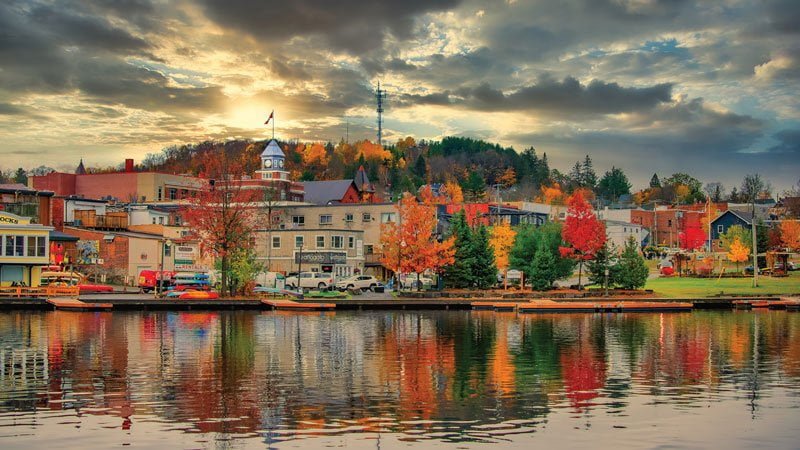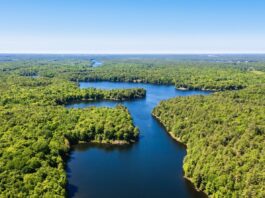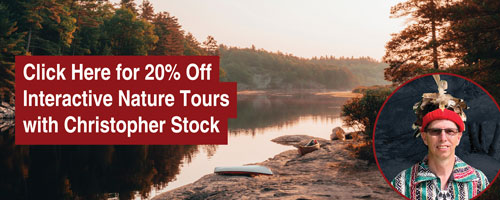Muskoka’s Fall Colours: A Super-Natural Spectacle
Muskoka is almost as famous for its breathtaking display of autumn colour as it is for its sparkling lakes and prowess as a vacation destination. But have you ever wondered just why Muskoka’s forests look so spectacular this time of year?
By Tim Winegard, M.Sc.
Owner, Muskoka Tree Solutions Inc.
Muskoka is home to some of the world’s most vibrant fall colour displays – a dynamic palette of glowing golds, sunset oranges and crimson-reds, spread through the forest canopy as trees prepare for the shorter, colder days of winter. It’s little wonder that artists have attempted to capture its grandeur on canvas and film for over a century. But have you ever wondered why Muskoka is host to such a natural extravaganza of colour?

As cottagers, we know too well the shorter days of autumn: the morning chill that lingers longer with each day, or a cool breeze on an otherwise sunny afternoon. Shorter days and colder nights are noticed by more than just the human inhabitants of cottage country. They provide strong signals to the flora and fauna of the area to prepare for winter. Combined with the right assemblage of trees capable of producing a spectrum of colours, Muskoka’s lake-spotted landscape sets the stage for this super-natural display.
The science behind the display
Tree species like sugar and red maples are the true stars of the fall colour exhibition, in part because their leaves contain a range of pigmented compounds. As the relative abundance of these elements vary throughout the year, they produce different leaf colours. Chlorophyll, the photosynthesizing compound within plant leaves, primarily reflects green light, while absorbing light along the blue and yellow-red part of the spectrum. (What we see as a leaf’s colour is actually the light the leaf is predominantly reflecting, not absorbing.) Leaves also contain the compound anthocyanin, which reflects red light, and carotenoids, which reflect yellow and orange light.
In autumn, chlorophyll begins to break down, revealing the presence of these other compounds that are involved in late-season energy recovery by the tree. As fall progresses, the exact combinations of chlorophyll, anthocyanin and carotenoids vary among species and even individuals, creating a diverse spectrum of colours.

Selecting the perfect place and time to see fall colours
Determining the best place and time to witness Muskoka’s fall colours is certainly up for debate. Nonetheless, one predictor of the expected vibrancy is the number of sunny days leading into fall. Under sunny conditions, anthocyanin and carotenoids increase in abundance within the leaves, which yields the brightest and longest-lasting displays of colour. Conversely, cloudy days and precipitation tend to result in an earlier start to the colour change, as well as an overall duller and shorter display.
To further complicate the guessing game of timing peak colour, the growing conditions, stress level, and exposure of trees can impact their timing and intensity. For example, trees that are stressed due to water, insects or disease tend to change colour sooner and faster than the rest of the forest. (This can be a great indicator for cottage owners that a problem tree may soon be on the horizon.)
What colours to expect from your trees
As you look out at the colours this fall, you will notice the shades of green produced by conifers like hemlock, pine or cedar; the browns of oak leaves; the golden yellows of tamarack (the only conifer to lose its needles), poplar, birch, beech and ash; as well as the the oranges and reds of maples. Together they form a backdrop of spectacular diversity that can brighten and fade by the day.
Muskoka Tree Solutions hopes that you find time to gather with friends and family this fall to share in this colour-filled farewell to the summer season. If you are interested in learning more about crafting your property’s palette of colours, check out muskokasolutions.com, or contact us at 705-388-TREE (8733) to arrange a consultation.






